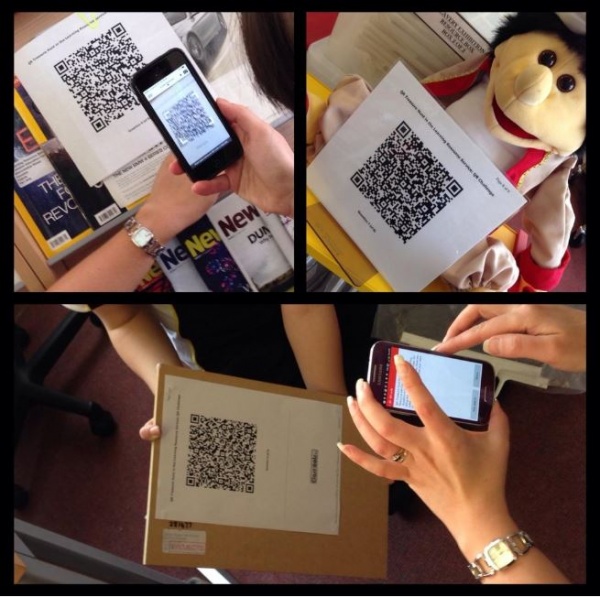 Malcolm Wilson, ICT Curriculum Development Officer within the Curriculum Support team of Service and School Improvement, Falkirk Council Education Services, presented a professional development session to teachers from several educational establishments on engaging with learning using QR codes and mobile devices. This session was supported by Yvonne Manning, Principal Librarian, Service and School Improvement Team of Falkirk Council Education Service, and colleagues within the Learning Resource Service of Falkirk Council Education Services.
Malcolm Wilson, ICT Curriculum Development Officer within the Curriculum Support team of Service and School Improvement, Falkirk Council Education Services, presented a professional development session to teachers from several educational establishments on engaging with learning using QR codes and mobile devices. This session was supported by Yvonne Manning, Principal Librarian, Service and School Improvement Team of Falkirk Council Education Service, and colleagues within the Learning Resource Service of Falkirk Council Education Services.
Participants first took part in a pre-created activity trail to interact with Falkirk Council Education Services Learning Resource Service based in Camelon Education Centre. This involved participants making use of their own mobile device to scan the QR codes which were located within various parts of the building, each of which revealed a task to complete, and then provided a clue to find the next QR code and associated task.
This particular activity trail had been created using the QR Code Treasure Hunt Creator from Classtools.net http://www.classtools.net/QR/index.php – which provides a step-by-step guide for use by educators creating their own learning trail for their own pupils.
The session demonstrated that QR codes used with mobile devices can be used across the curriculum and for all stages, and provide a quick way to present information or tasks in a form which engages learners in their learning. Examples were described including using QR codes for Class trails, linking to audio feedback, pupil videos talking about their artwork or practical work, teachers adding links to support resources on labels stuck on pupil work.
The session provided advice about what to consider when making use of mobile devices in an educational context (taking into account the AUP which can be found here https://blogs.glowscotland.org.uk/fa/mobiledevices/documents/ and availability of wireless and mobile devices).
Rather than simply linking to information the features of the mobile device can also be harnessed when linking from a QR code. An example of how this was used in an outdoor learning context was shared, and a description of this can be found here:https://blogs.glowscotland.org.uk/fa/CurriculumSupport/2014/05/12/taking-ict-outdoors-with-mobile-devices/
The session provided guidance on a range of free QR Code Creators which are available. Some provide different options (such as www.unitaglive.com/qrcode), some provide tracking and automatic shortlinks (e.g. http://goo.gl/), some provide step by step guide to creating different types of link (to text message, URL, text-only, etc).
For more about how they can be used, how to create QR codes and more click on the following link:

